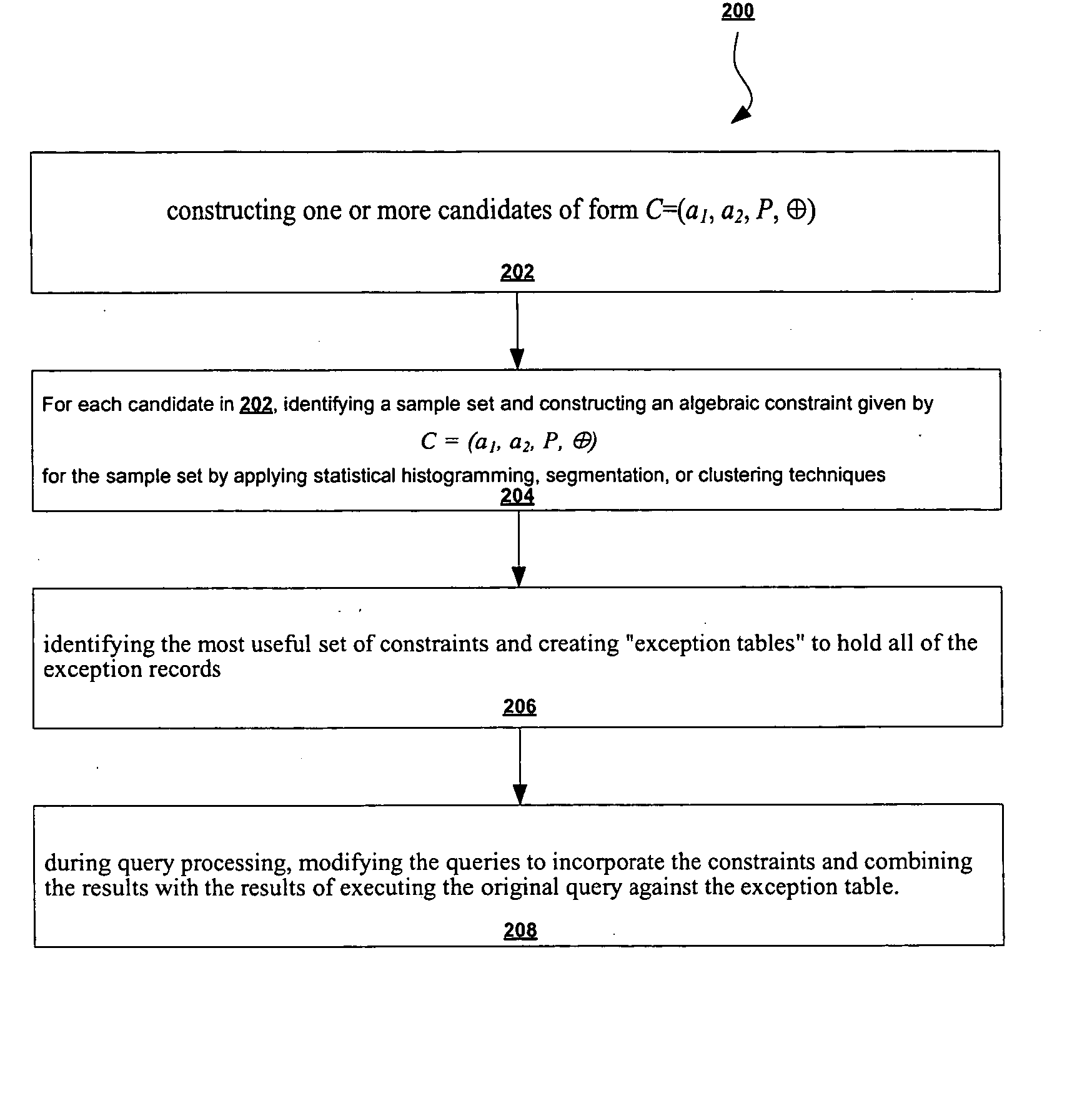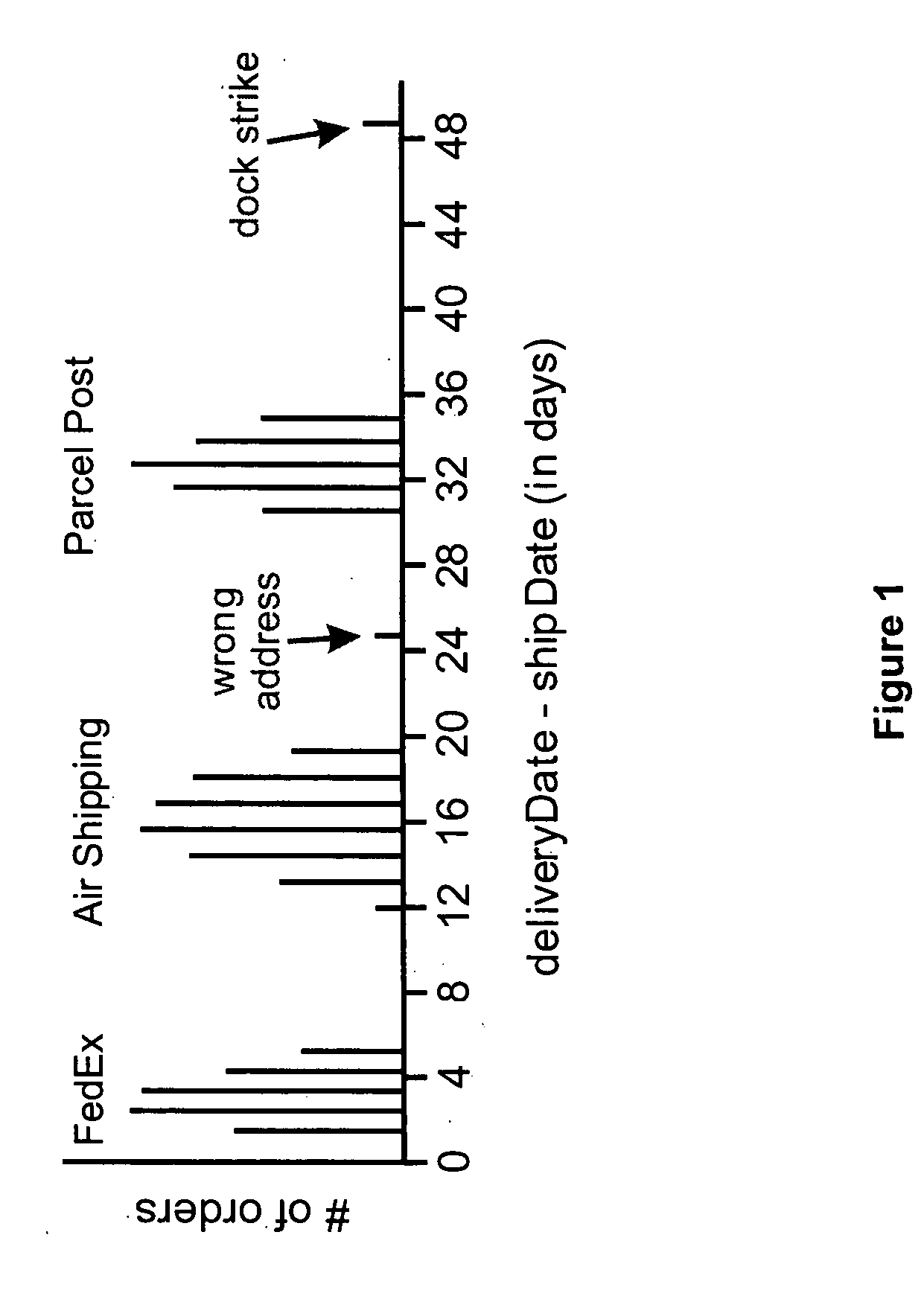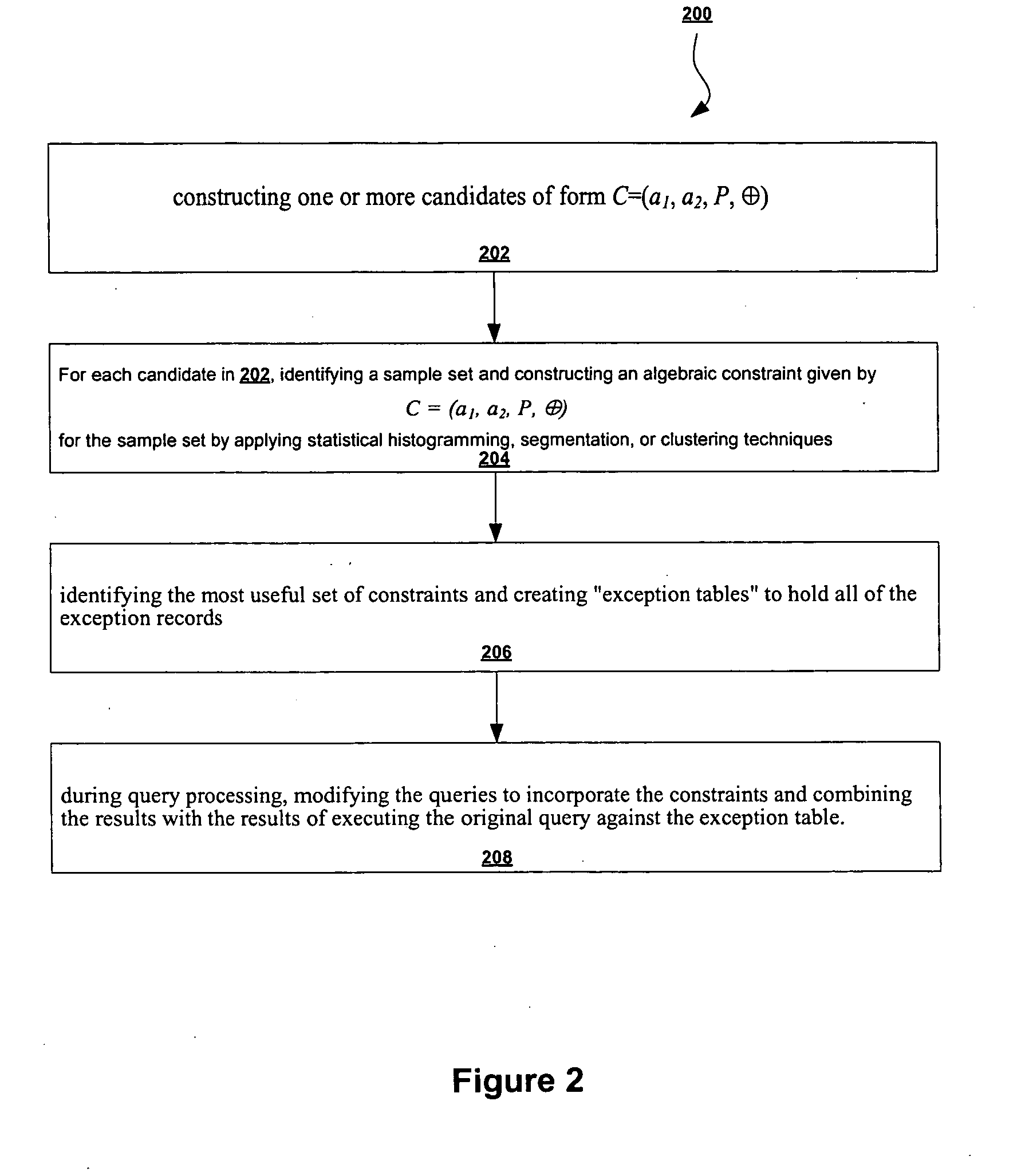Method for discovering undeclared and fuzzy rules in databases
a database and fuzzy rule technology, applied in the field of databases, can solve problems such as and achieve the effect of improving cost estimates and substantial speedups in query processing
- Summary
- Abstract
- Description
- Claims
- Application Information
AI Technical Summary
Benefits of technology
Problems solved by technology
Method used
Image
Examples
example 1
[0039] Consider a hypothetical sales database that contains tables orders and deliveries as in Tables 1 and 2 (provided below), and suppose that the database contains many year's worth of data.
TABLE 1OrdersorderIDshipDate2A52001-01-033C22001-04-153B82002-11-252E12002-10-313D62002-07-25......
[0040]
TABLE 2DeliveriesorderIDdeliveryDatedeliveryTime2A52001-01-0609:503C22001-04-2713:003B82002-12-1011:202E12002-12-0216:103D62002-07-2908:50.........
[0041] A casual inspection of the columns orders.shipDate and deliveries.deliveryDate may not reveal any meaningful relationships, but if the following SQL query is executed [0042] SELECT DAYS(deliveries.deliveryDate) [0043] DAYS(orders.shipDate) [0044] FROM orders, deliveries [0045] WHERE orders.orderID=deliveries.orderID
with the resulting data points being plotted as a histogram, a plot as in FIG. 1 is obtained. It is seen from FIG. 1 that, except for a small number of outlier points, the data satisfy the predicate:
(deliveryDate BETWEEN sh...
example 2
[0055] Consider the example of the Section 1, with the deliveryDate column located in the orders table, as shown in Table 3 below.
TABLE 3Alternate version of orders tableorderIDshipDatedeliveryDate2A52001-01-032001-01-063C22001-04-152001-04-273B82002-11-252002-12-102E12002-10-312002-12-023D62002-07-252002-07-29.........
[0056] The orders table is horizontally range-partitioned on deliveryDate across a number of parallel processing nodes. Now, lets consider the following query: [0057] SELECT COUNT(*) [0058] FROM orders [0059] WHERE orders.shipDate=‘2003-07-01’
[0060] Using the information derived from the predicate in (1), the following predicate can be derived:
deliveryDate BETWEEN ‘2003-07-01’+2 DAYS AND ‘2003-07-01’+5 DAYS
PUM
 Login to View More
Login to View More Abstract
Description
Claims
Application Information
 Login to View More
Login to View More - R&D
- Intellectual Property
- Life Sciences
- Materials
- Tech Scout
- Unparalleled Data Quality
- Higher Quality Content
- 60% Fewer Hallucinations
Browse by: Latest US Patents, China's latest patents, Technical Efficacy Thesaurus, Application Domain, Technology Topic, Popular Technical Reports.
© 2025 PatSnap. All rights reserved.Legal|Privacy policy|Modern Slavery Act Transparency Statement|Sitemap|About US| Contact US: help@patsnap.com



